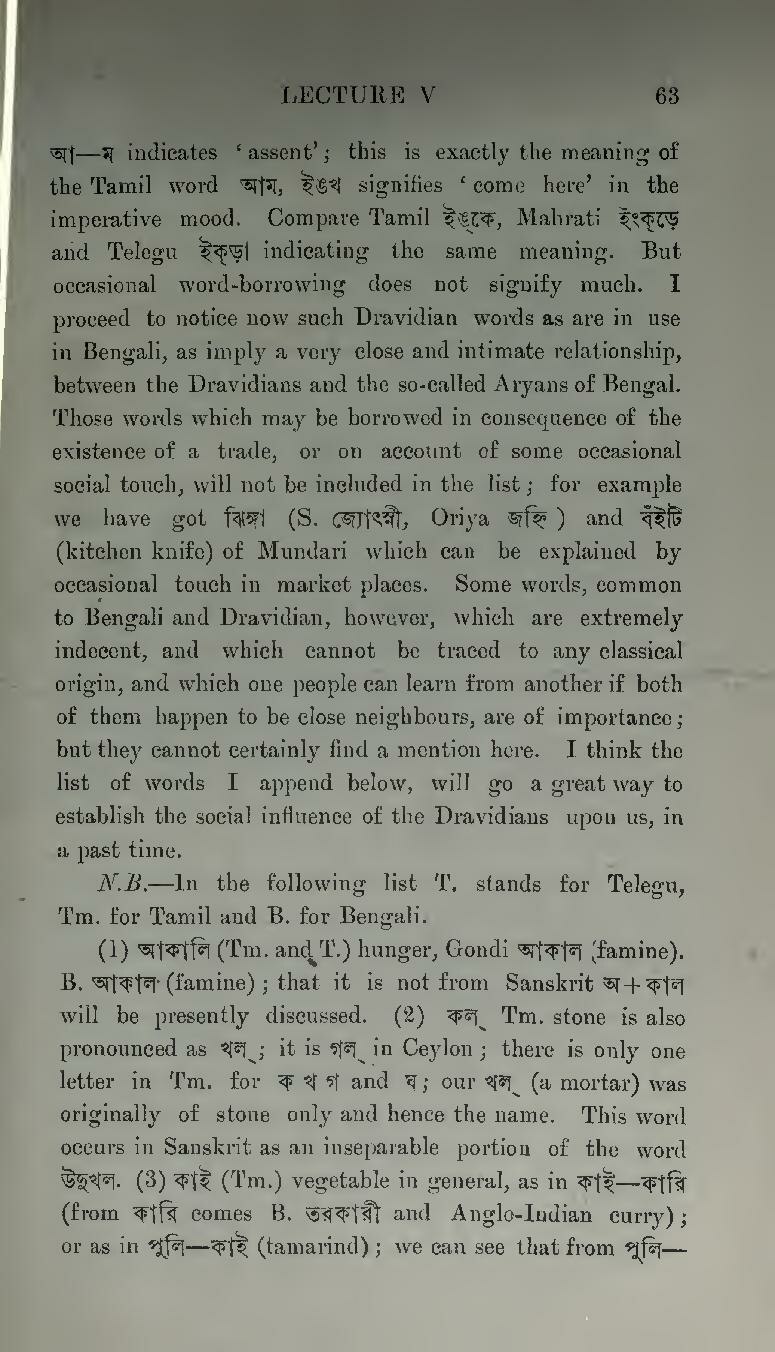আ—ম indicates 'assent'; this is exactly the meaning of the Tamil word আম, ইঙখ signifies 'come here' in the imperative mood. Compare Tamil ইঙ্কে, Mahrati ইংক্ড়ে and Telegu ইক্ড়া indicating the same meaning. But occasional word-borrowing does not signify much. I proceed to notice now such Dravidian words as are in use in Bengali, as imply a very close and intimate relationship, between the Dravidians and the so-called Aryans of Bengal. Those words which may be borrowed in consequence of the existence of a trade, or on account of some occasional social touch, will not be included in the list; for example we have got ঝিঙ্গা (S. জ্যোৎস্নী, Oriya জহ্নি) and বঁইটি (kitchen knife) of Mundari which can be explained by occasional touch in market places. Some words, common to Bengali and Dravidian, however, which are extremely indecent, and which cannot be traced to any classical origin, and which one people can learn from another if both of them happen to be close neighbours, are of importance; but they cannot certainly find a mention here. I think the list of words I append below, will go a great way to establish the social influence of the Dravidians upon us, in a past time.
N.B.—In the following list T. stands for Telegu, Tm. for Tamil and B. for Bengali.
(1) আকালি (Tm. and T.) hunger, Gondi আকাল (famine), B. আকাল (famine); that it is not from Sanskrit অ + কাল will be presently discussed. (2) কল্ Tm. stone is also pronounced as খল্; it is গল্ in Ceylon; there is only one letter in Tm. for ক খ গ and ঘ; our খল্ (a mortar) was originally of stone only and hence the name. This word occurs in Sanskrit as an inseparable portion of the word উদুখল. (3) কাই (Tm.) vegetable in general, as in কাই—কারি (from কারি comes B. তরকারী and Anglo-Indian curry); or as in পুলি—কাই (tamarind); we can see that from পুলি—
